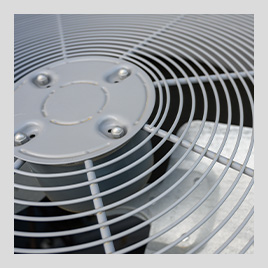
How Does Your Furnace Work?
Anyone who has ever spent a sleepless night tossing and turning in a cold home because of a broken heater will never look at a furnace the same way again. You are more likely to get a quality night sleep on a mattress stuffed with river rocks. No wonder residents of cities like Rancho Santa Margarita, Laguna Niguel, Laguna Beach, and Corona prize their heating system and when that system begins to fail or underperform it starts to get the attention it deserves. Regardless of what prompts homeowners to take a second look at their furnace, or perhaps the first look, they need to be conversant with what makes it tick. Here are the basics.
How Does a Heater Work?
Electric heaters utilize electrical energy to heat up heating coils. The energy turns into heat as it passes through the resistor. Gas furnaces, on the other hand, generate heat by burning propane or natural gas. Air ducts then blow air from your home over the heat exchanger which warms the air up before recirculating it back into your house.
What are the Parts of a Heater?
- Induced Draft Motor: Modern furnaces rely on a motor to create a draft to exhaust combustion fumes rather than heat produced by the flame from the burner. This device creates a high-voltage spark, or it glows red hot to ignite the rush of gas to the burner.
- Ignitor, Gas Valve: The gas valve is a critical component of your furnace, of course. The gas valve uses an electromagnet to regulate gas flow to the burner assembly. It is controlled by your circuit board which reads the ambient air temperature in your home through your thermostat.
- Burner Assembly: The heart of a gas heater is the burner assembly. Most modern furnaces have two or more burners. When the temperature in your home falls below a certain level, gas begins to flow through the gas valve and an electronic ignition system ignites it. This hot, combusted gas, rises past a heat exchanger and out through a vent that leads to the outside of the house. There aren't moving parts on a burner. It's a simple device, very similar to your stove, which allows fuel and air to mix at the most suitable ratio so they can burn at the highest efficiency possible.
- Heat Exchanger: The heat exchanger allows the transfer of heat from the furnace burner assembly to the air in your home, without poisoning it. The principle is simple, heat the metal with a gas flame and pass air over it. The heated air gets distributed to the house the fuel gas goes out the chimney.
- Furnace Blower Motor: The blower motor creates a pressure gradient inside the furnace so that cold air is pulled in to be heated and distributed throughout your home through your air distribution Modern forced-air systems are far superior to old gravity heating, which rely on convection to distribute air throughout the house.
- Air Return: Cold air returns to the furnace to be heated through a length of ductwork, known as your air return. Insufficient return air can cause your heating system to run inefficiently, wasting money and energy. A motor in the gas furnace pulls in air from your home. That air flows through ducts into the furnace combustion chamber. Heat from the combusted natural gas warms the air as it passes by. The warm air is then distributed to the living areas by your air distribution system.
- Air Filter: Before air enters your furnace it moves through an air filter. The air filter helps purify the air in your home and protect your heating system from dirt and debris.


-
“I'd be happy to use them again.”
- Gaylord -
“This company is amazing”
- Mason W. -
“Thank you for making this a seamless process for it being my first time ever going through this.”
- Jessica S.
Heating System Maintenance
Modern heating systems are designed to be highly efficient, but that efficiency can rapidly decline if the furnace is not regularly serviced. New heating units are usually outfitted with flimsy air filters which are ineffective. If the stock air filters are not improved, debris can impact your furnace and get into your air distribution system, shortening the lifespan of your equipment and spreading germs and dirt throughout your home.
This can also decrease the efficiency of your furnace. One of the most common problems in older furnaces is a dirty burner assembly. As grime collects over time, the burner becomes less efficient. It produces less heat and doesn't completely burn the gas, resulting in a colder home and increased energy bills. Fortunately, most burners can be cleaned and regain most of their efficiency.








